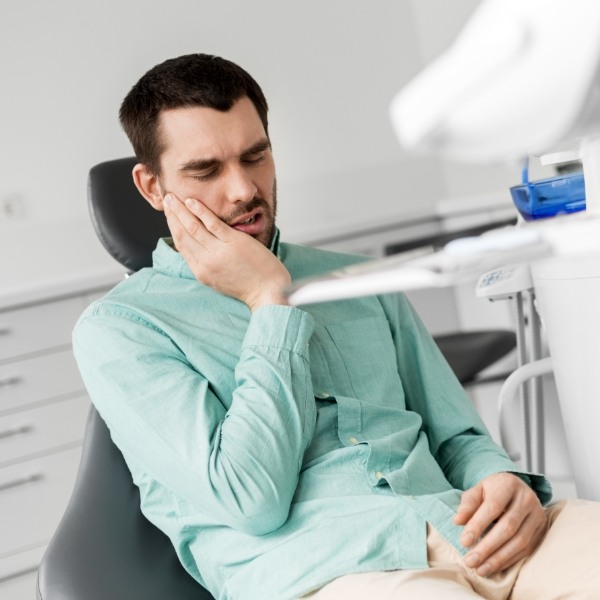Emergency Dentist — Pinehurst, NC
Getting You Relief When It’s Most Needed
At some point in your life, you might have a toothache that does not go away, or you might break a tooth while eating something hard. Such emergencies can be scary, but you’ll have an experienced, gentle dentist to help you if you call Olmsted Village Dental Care for an appointment. Dr. Hudson will arrange to see you right away and quickly get to the underlying source of your dental care need to treat it right away with emergency dentistry in Pinehurst.
Why Choose Olmsted Village Dental Care for Emergency Dental Care?
- Well-Known and Trusted Dentist
- One Stop for Comprehensive Dental Services
- Oral Conscious Sedation Available
What to Do in a Dental Emergency

- Call our office right away. The sooner you call, the better chance we have of solving your problem. We’ll schedule your appointment as soon as we can. Over the phone, we’ll provide first-aid instructions to help you manage your situation in the meantime.
- See Dr. Hudson for an emergency exam. When you get to our office, Dr. Hudson will thoroughly assess the problem and take X-rays if needed. A detailed examination is necessary to confirm the source of your symptoms and figure out what’s needed to get your oral health back on track.
- Get the care you need. Our team will work quickly to create a custom treatment plan that’ll get your emergency under control. Some common solutions for dental emergencies include dental fillings, crowns, root canal therapy, or even extraction.
The Most Common Dental Emergencies
The first thing you should do in any dental emergency is call us immediately and schedule an appointment so we can figure out what treatments are needed to stop the problem before it grows worse. While you’re waiting for your visit, there are some steps you can take to control your pain and limit further damage. The steps you need to take for successful dental first aid depends on the kind of emergency you have; below are some common oral health issues and how they can be dealt with.
Understanding the Cost of Dental Emergencies

It’s important to have a dental emergency treated immediately, but you need to be aware of the costs associated with the treatment. Some treatments are more costly than others; sometimes a minor restoration is all that’s needed, but more severe cases might call for a root canal or even an extraction. When emergency care is called for, our team will discuss pricing information with you and discuss how you can use insurance and financing to manage the associated costs.
How to Prevent Dental Emergencies

Dental emergencies can strike without warning, and you can’t always avoid them. But there are steps you can take to protect your oral health, such as:
- Wearing a protective mouthguard for sports or nighttime teeth grinding
- Not biting on hard items like ice and fingernails
- Using tools to open packages and bottles instead of your teeth
- Brush and floss consistently every day
- Come to our clinic every six months for a routine checkup and cleaning
Root Canals

Root canal therapy is often performed as an emergency procedure. Do not worry if you’re told that it’s necessary in your case; the treatment causes no more discomfort than filling placement and other routine procedures. The idea is that the infected parts of the tooth that are causing you pain are removed, and the inner chamber is sterilized so that no further damage is done. You’ll find relief from the pain and still be able to keep the tooth in question.
Tooth Extractions

A tooth might need to be removed if:
- You have a cavity that can’t be repaired with a filling or crown
- The tooth is so badly broken it can’t be put back together
- An infection has reached the point where root canal therapy is no longer an option
- Gum disease has weakened the tissues holding the tooth in place
When tooth extraction is the only viable choice, we’ll make sure that you’re fully aware of your options for replacing it afterward.
I Need a Checkup & Cleaning I Need a Dentist for My Child I am Worried About Gum Disease I Have a Cavity or Broken Tooth I am Missing One or More Teeth I Want to Enhance My Smile I am Scared of the Dentist View Our Services


